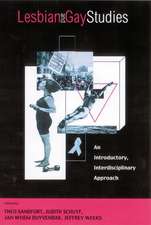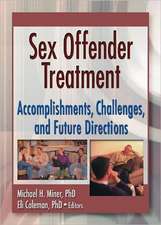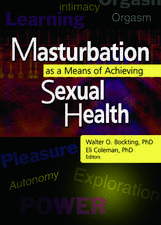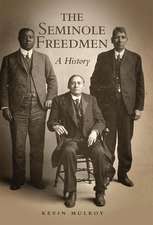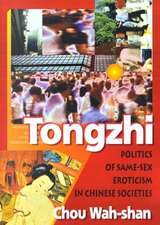Sexuality and Gender in Postcommunist Eastern Europe and Russia
Autor Edmond J. Coleman, Theo Sandforten Limba Engleză Hardback – 30 noi 2004
Sexuality and Gender in Postcommunist Eastern Europe and Russia is a groundbreaking look at the new sexual reality in Central, Eastern, and Southeast Europe after the fall of communism. The book presents the kind of candid discussion of sexual identities, sexual politics, and gender arrangements that was often censored and rarely discussed openly before the breakup of the Soviet Union in 1987. Authors from a variety of disciplines examine how the changes caused by rapid economic and social transformation have affected human sexuality and if those changes can generate the social tolerance necessary to produce a well-rooted democracy.
The first theoretical and empirical body of work to sexuality in (post)transitional countries, Sexuality and Gender in Postcommunist Eastern Europe and Russia examines the effects of the profound social transformation taking place in the former Soviet Union. Through an interdisciplinary perspective, the book addresses vital issues of this transformation, including gender relations, gender roles and sex norms in transition, sexual representations in the media, patterns of adult sexual behavior, gay and lesbian issues, sex trafficking, health risks, and sex education. The book also presents a critical examination of whether the fall of communism has, in fact, induced changes in sexuality and gender relations.
Sexuality and Gender in Postcommunist Eastern Europe and Russia examines the changes in sex and gender in countries in transition, including:
- the negative consequences of Serbia’s “state-directed non-development” during the 1990s
- the causes and consequences of trafficking in women from the Russian Federation
- the ongoing debate over human rights for sexual minorities in Romania
- the effects of two Yugoslavian films released in the 1990s that feature transgender characters
- sexualities in transition in Croatia
- problems created by changes in sexual behavior among urban Russian adolescents
- the social and legal state of lesbians in Slovenia
| Toate formatele și edițiile | Preț | Express |
|---|---|---|
| Paperback (1) | 427.56 lei 3-5 săpt. | +30.49 lei 6-10 zile |
| Taylor & Francis – 24 noi 2004 | 427.56 lei 3-5 săpt. | +30.49 lei 6-10 zile |
| Hardback (1) | 770.74 lei 6-8 săpt. | |
| Taylor & Francis – 30 noi 2004 | 770.74 lei 6-8 săpt. |
Preț: 770.74 lei
Preț vechi: 1243.22 lei
-38% Nou
Puncte Express: 1156
Preț estimativ în valută:
147.50€ • 160.16$ • 123.90£
147.50€ • 160.16$ • 123.90£
Carte tipărită la comandă
Livrare economică 23 aprilie-07 mai
Preluare comenzi: 021 569.72.76
Specificații
ISBN-13: 9780789022936
ISBN-10: 0789022931
Pagini: 432
Dimensiuni: 152 x 229 x 33 mm
Greutate: 0.82 kg
Ediția:1
Editura: Taylor & Francis
Colecția Routledge
Locul publicării:Oxford, United Kingdom
ISBN-10: 0789022931
Pagini: 432
Dimensiuni: 152 x 229 x 33 mm
Greutate: 0.82 kg
Ediția:1
Editura: Taylor & Francis
Colecția Routledge
Locul publicării:Oxford, United Kingdom
Cuprins
- About the Editors
- Contributors
- Foreword
- Acknowledgments
- Introduction. Sexuality and Gender in Times of Transition (Aleksandar Štulhofer and Theo Sandfort)
- Changing the Gender Order
- Changing Social Regulation of Sexuality
- Sexualities in Postcommunism
- The Contributions
- PART I: POSTCOMMUNIST CONSTRUCTIONS OF GENDER AND
SEXUALITY - Chapter 1. Gender Inequalities in the Nationalist, Nontransitional Context of Serbia, Emphasizing Vojvodina, During the 1990s (Tatjana Ðuric-Kuzmanovic)
- Introduction
- A Gendered Approach to Theories of Development and Transition
- General Economic and Social Conditions in Serbia During the 1990s
- Gender Oppression in Serbia: From Socialism to State-Directed Nondevelopment
- Current Developments and Future Trends in the Labor Market for Women During Transition in Serbia, Emphasizing Vojvodina
- Summary: Toward Affirmative Action
- Chapter 2. Hierarchies of Difference: National Identity, Gay and Lesbian Rights,
and the Church in Postcommunist Romania (Voichita Nachescu) - Gender and Romanian Communism
- Brief History
- The Actors of the Debate
- The Debate
- Conclusion
- Chapter 3. From Sworn Virgins to Transvestite Prostitutes: Performing Gender and
Sexuality in Two Films from Yugoslavia (Kevin Moss) - Chapter 4. The Spatiality of Identities and Sexualities: Is “Transition” a
Challenging Point at All? (Biljana Kašic) - Introductory Notes: Facing the Question
- Facing the Approach and Problem That Sexuality Matters
- Facing Transition and War(s): Stereotypes, Trends, and Media Signifiers of Sexualities
- Facing Female Sexuality Within the Pornography of War(s)
- Instead of a Conclusion: Facing Obstacles, Gaps, and Potentials Within/Crossing “Transition”
- PART II. SEXUAL POLITICS AND SEXUAL IDENTITIES
- Chapter 5. Sexual Culture and Politics in Contemporary Russia (Igor S. Kon)
- Post-Soviet Sexuality
- Attitudes Toward Sex Education
- The Antisexual Crusade
- Chapter 6. Serbian Sexual Response: Gender and Sexuality in Serbia During the
1990s (Tea Nikolic) - Excitement (The Awakening of the Nation)
- Plateau (Turbo Folk)
- Orgasm (Pornography)
- Resolution
- Chapter 7. The Sexual Status of Lesbian Women in Slovenia in the 1990s (Tatjana Greif)
- Introduction
- Historical Background
- The Lesbian Movement in Slovenia
- The Current Legal Situation Concerning Lesbian Women
- Lesbians Within Education, the Health System, and the Military
- The Social Situation Concerning Lesbian Women
- Conclusion
- Chapter 8. Sexualities in Belarus: Some Major Patterns of Sexual Behavior and Their Cultural Background (Alexei Lalo and Nikolai Schitov)
- Introduction
- Gender Roles and Images
- Sexualities and “Witch Hunts”
- Post-Soviet Sexual Discourses and Western Influences
- Issues of Domestic Violence: The Controversial Role of Physicians
- Sex-Related Prejudice and Sex Crimes: The Orthodox Church and Homophobia
- Conclusion
- Chapter 9. The New Visibility: Representing Sexual Minorities in the Popular Culture of Post-Soviet Russia (Brian James Baer)
- PART III. THE RISE OF SEX MARKETS
- Chapter 10. Supplying Women for the Sex Industry: Trafficking from the Russian Federation (Donna Hughes)
- Introduction
- Collapse and Criminalization of the State and Economy
- Economic Inequality for Women
- Regional Variation in Unemployment
- Traffickers Recruiting Women for Work Abroad
- Public and Private Violence
Notă biografică
Edmond J Coleman (Author) , Theo Sandfort (Author)
Descriere
Sexuality and Gender in Postcommunist Eastern Europe and Russia is a groundbreaking look at the new sexual reality in Central, Eastern, and Southeast Europe after the fall of communism. The book presents the kind of candid discussion of sexual identities, sexual politics, and gender arrangements that was often censored and rarely discussed openly before the breakup of the Soviet Union in 1987. Authors from a variety of disciplines examine how the changes caused by rapid economic and social transformation have affected human sexuality and if those changes can generate the social tolerance necessary to produce a well-rooted democracy. Handy tables and figures make the information easy to access and understand.
To view an excerpt online, find the book in our QuickSearch catalog at www.HaworthPress.com.
To view an excerpt online, find the book in our QuickSearch catalog at www.HaworthPress.com.










